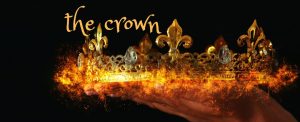
Before there were Kings, the nation of Israel’s center of community life was the Tabernacle. Priests received divine instruction and passed the commands of God on to the people through the Elders and Judges who served as administrators of God’s law. However, living in Canaan had required facing powerful armies. While according to God’s promise, Israel was immediately victorious in battle against the “ittes” in the land of Canaan, pockets of pagan rituals and idolatry remained and proved tempting to the next generation. Among the tragic results of the sins of the people, Israel experienced spiritual defeat leading to internal conflict, and some in Israel began thinking (in spite of God’s instruction to the contrary) about conducting national affairs differently. According to 1 Samuel 8, the elders of Israel came to the priest Samuel and asked him to appoint for them a king so that they could be like “all the nations.” This ideological king, according to the elders would serve as both their Judge and Military Commander and Chief. The trade off was tragic. God advised the people that if they appointed a king over them, their king would exploit them. They did not listen, they insisted against God’s wisdom and their lives were soon filled with misery. In many ways the “Chronology of the Crowns” (the books of 1st and 2nd Kings) are the record of the destruction and misery that soon followed. But in the midst of the devastation and division of God’s people, God spoke in 2 Samuel 7 reminding Israel that there was still hope in His grace and love for them. Here God promised David that a descendant, a son of his, would rise up and that His throne, His kingdom would be established forever.
In this series we will look at what drives people to crown heads with authority, we’ll consider what crowns people wear and why. We’ll search the Old and New Testament scriptures with God’s help, discovering deep meaning in the story of a man who wore a crown that should have been ours and how we can get it back – if we really want to.



0 Comments